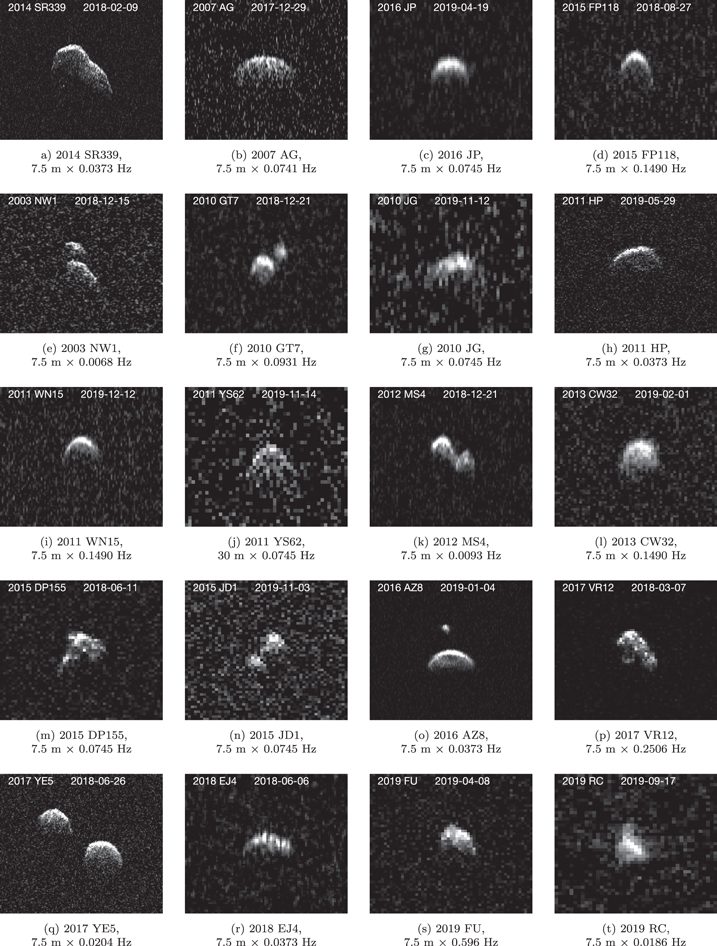Collapsed Arecibo telescope offers near-Earth asteroid warning from beyond the grave
The famous Arecibo Observatory in Puerto Rico completely collapsed in 2020. Now, scientists going through its final observations offer a major new asteroid report.

After collapsing into pieces in December 2020, the mighty Arecibo Observatory has a final parting gift for humanity — and it's a doozy.
Using data collected by Arecibo between December 2017 and December 2019, scientists have released the largest radar-based report on near-Earth asteroids ever published. The report, published Sept. 22 in The Planetary Science Journal, includes detailed observations of 191 near-Earth asteroids, including nearly 70 that are deemed "potentially hazardous" — that is, large asteroids with orbits that bring them within 4.65 million miles (7.5 million kilometers) of Earth, or roughly 20 times the average distance between Earth and the moon.
Fortunately, none of these newly described asteroids pose an immediate threat to Earth; according to NASA, our planet is safe from deadly asteroid impacts for at least the next 100 years. However, scientists still pay close attention to near-Earth objects like these in case their trajectories happen to shift by some fluke of nature — say, a bump from another asteroid — thereby putting them on a collision course with Earth.
The new report also flagged several asteroids deemed worthy of future study, including an oddball space object called 2017 YE5 — an ultra-rare "equal mass" binary asteroid, made of two nearly identical size rocks that are constantly orbiting one another. (Each of the rocks is estimated to measure between 2,600 and 2,950 feet, or 800 to 900 meters, in diameter). The asteroid's high radar reflectivity may indicate an abundance of water ice beneath its surface, possibly making it a never-before-seen class of icy, equal mass, near-Earth asteroid, the researchers wrote.

With this new "treasure trove" of data, scientists can better measure these asteroids' shapes, sizes and spin periods, which are crucial metrics for assessing the potential risks that the asteroids may pose to our planet, lead study author Anne Virkki, a researcher with the Department of Physics at the University of Helsinki in Finland, said in a statement.
"The amount of valuable data collected is unique, and these results could not have been achieved with any other existing facility," study co-author Flaviane Venditti, head of Arecibo's Planetary Radar Science Group, added.
The Arecibo Observatory was constructed in Puerto Rico in 1963, becoming the world's largest and most powerful radio telescope. Its iconic 1,000-foot-wide (305 m) telescope dish became world famous in the 1990s after it was featured in movies such as "Contact" (1997) and "GoldenEye" (1995). By then, the observatory was already known in the scientific community for beaming humanity's first message to aliens into space in 1974.
Sign up for the Live Science daily newsletter now
Get the world’s most fascinating discoveries delivered straight to your inbox.
More recently, Arecibo's observations of asteroids played a direct role in planning NASA's Double Asteroid Redirection Test (DART) mission, in which scientists crashed a spacecraft into the near-Earth asteroid Dimorphos and altered its orbital period by 32 minutes.
Arecibo's career ended abruptly in December 2020, after two critical support cables snapped, leading to the complete collapse of the telescope. In October 2022, the National Science Foundation — which owns the site on which Arecibo was built — announced that the telescope will not be replaced or repaired, much to the dismay of scientists and space lovers around the world.
Researchers are still analyzing a backlog of data from Arecibo, the team noted — so the world's most famous dead telescope may still have more scientific gifts to offer us from beyond the grave in the years to come.

Brandon is the space/physics editor at Live Science. His writing has appeared in The Washington Post, Reader's Digest, CBS.com, the Richard Dawkins Foundation website and other outlets. He holds a bachelor's degree in creative writing from the University of Arizona, with minors in journalism and media arts. He enjoys writing most about space, geoscience and the mysteries of the universe.









